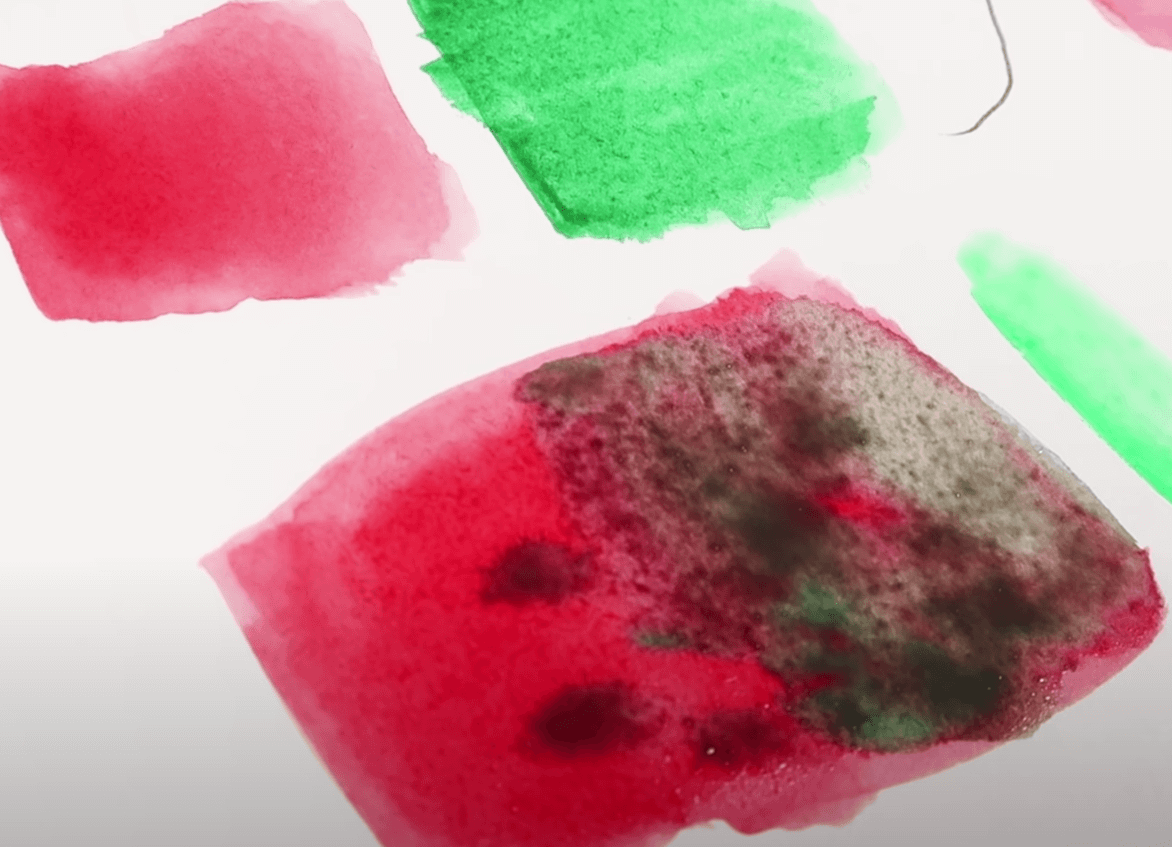Watercolor is a delicate and beautiful medium that can produce stunning artwork when used correctly. However, when the colors become muddy, it can ruin the painting and make it unappealing. Muddy watercolor occurs when the colors mix and become dull, grayish, and lacking in vibrancy. In this article, we will discuss five reasons why watercolor becomes muddy and how to avoid it.

Quicktips on how to solve muddy watercolors
- Use two water containers to keep your water cleaner
- Don’t mix complementary colors wet in wet but let them dry in between if you need to mix

Reasons Why Watercolor paint Becomes Muddy
- Over-mixing Colors
One of the primary reasons why watercolor becomes muddy is over-mixing colors. When you mix too many colors, the pigments start to blend and create a murky mixture. This process results in a lack of clarity and vibrancy in your artwork. - Using Too Many Colors
Using too many colors in your artwork can cause muddy watercolor. Each color has its unique pigment, and when you mix too many of them, the pigments start to blend and create an undesirable color. - Using Too Many Colors
Using too many colors in your artwork can cause muddy watercolor. Each color has its unique pigment, and when you mix too many of them, the pigments start to blend and create an undesirable color.
Do this instead: Using fewer colors can help you avoid muddy watercolor. By limiting the number of colors you use, you can control the pigments’ interaction and create cleaner and more vibrant artwork. - Poor Quality of Paper
Using low-quality watercolor paper can cause the paint to spread and bleed into each other, causing muddy watercolor. The paper’s texture and weight also play a significant role in how the watercolor pigments interact with the surface.
Do this instead: Using quality watercolor paper is essential to avoid muddy watercolor. Quality paper has a texture and weight that can handle the pigments effectively, preventing them from spreading and bleeding into each other. - Incorrect Mixing Ratio of Paint and Water
Another reason for muddy watercolor is an incorrect mixing ratio of paint and water. Adding too much water can cause the pigments to dilute and mix in an undesirable way. Similarly, adding too little water can result in a thick and pasty mixture that is challenging to work with.
Do this instead: Mixing colors correctly is crucial to avoid muddy watercolor. You should mix the colors in a clean palette with enough water to create a smooth and consistent mixture. - Not Allowing Sufficient Drying Time
Not allowing sufficient drying time between layers can cause muddy watercolor. If you add another layer of paint while the first layer is still wet, the colors will start to mix, creating a muddy effect.
Do this instead: Allowing sufficient drying time between layers is crucial to avoiding muddy watercolor. Waiting for the paint to dry before adding another layer will prevent the colors from mixing and creating a muddy effect.

Effects of Muddy Watercolor on Artwork
Muddy watercolor can have several negative effects on your artwork, including loss of vibrancy, lack of contrast, muted tones, and uneven color distribution. These effects can make your artwork look unappealing and unprofessional.
Cleaning your brushes regularly is crucial to avoiding muddy watercolor. If you don't clean your brushes between colors, the pigments can mix and create an undesirable color.
Muddy watercolor can ruin your artwork and make it unappealing. In this article, we discussed five reasons why watercolor becomes muddy and how to avoid it. By using fewer colors, mixing colors correctly, using quality watercolor paper, allowing drying time between layers, and cleaning brushes regularly, you can prevent muddy watercolor and create a cleaner and more vibrant artwork.
FAQs
Can you fix muddy watercolor?
It depends on the extent of the muddiness. If the colors are slightly muddy, you can fix them by adding a clean layer of paint on top. However, if the colors are severely muddy, it may be difficult to fix them.
How can I tell if my watercolor is muddy?
You can tell if your watercolor is muddy by observing the colors. If they appear dull, grayish, or lack vibrancy, it may indicate muddy watercolor.
How do I know if my watercolor paper is of good quality?
Good quality watercolor paper should have a rough texture that can handle the pigments effectively. It should also be heavyweight and able to withstand multiple washes without bleeding or buckling.
